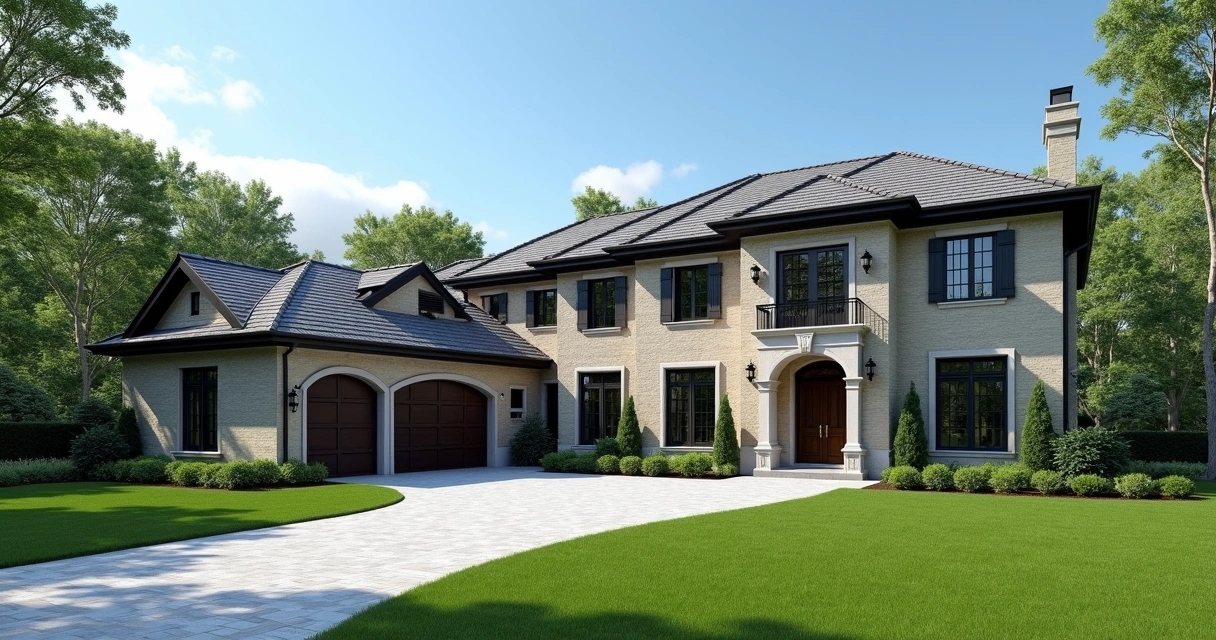When I first learned about home financing, I was totally lost. All I knew was that the world of home loans felt overwhelming, with acronyms flying left and right and rules that seemed to change depending on whom I asked. But then, after working with clients at Heart Mortgage and digging into the hard facts, I started seeing a clear pattern. The good, old-fashioned conventional loan kept making an appearance – for first-timers, investors, families refinancing, you name it. Yet, even today, most people ask me, “What exactly are conventional loans, and are they right for me?” Well, let’s break down what these loans are, how they work, and how I’ve watched them help people unlock the doors to their dream homes.

What is a conventional loan?
I’ve witnessed more than one homebuyer believe all mortgages are the same. But there’s a big distinction between a basic home loan and a mortgage backed by a government agency. Conventional loans are, at their core, any type of mortgage that isn’t insured or guaranteed by a branch of the U.S. government. Unlike loans from the Federal Housing Administration (FHA), Department of Veterans Affairs (VA), or USDA, these are funded by private lenders such as banks or credit unions, and they carry no direct government insurance if you default.
The Consumer Financial Protection Bureau’s page on conventional loans says these mortgages are sometimes harder to qualify for than government-backed mortgages but can come with lower overall borrowing costs. From what I’ve seen helping clients at Heart Mortgage, this rings true—good credit and a stable profile open doors.
So, what makes a standard mortgage “conventional”? Here’s the quick version:
- Lender risk: The lender takes on most of the risk. If you default, the loss is on them, unless mortgage insurance is in play.
- Not government-backed: No government guarantees; just the lender’s prerogative and your promise to pay.
- Conforming vs. non-conforming: Some meet government-set limits (conforming); others exceed them (jumbo, a type of non-conforming).
I often say: “If it isn’t backed by FHA, VA, or USDA, you’re likely dealing with conventional.”
The main requirements: Who gets approved and how?
In my experience, conventional loans are all about showing the bank you’re a safe bet. Here’s what lenders look at closely:
Minimum credit score
Lenders expect higher credit scores for these mortgages than, say, FHA. A score of at least 620 is typical for approval, though if you want better rates and lower costs, you should aim for 740 or above.
Down payment percentages
- Standard minimum: 3%-5% down for well-qualified buyers. Many people think they need 20%, but programs like the ones we set up for first-time buyers at Heart Mortgage show that’s not always true. For details, you can check our guide for first-time homebuyers.
- Better rates with more down: If you have 20% or more to put down, you skip mortgage insurance and may get improved offers.
Debt-to-income (DTI) ratios
Lenders want to know what portion of your income goes to repaying debts. According to the Cornell Law School’s Legal Information Institute, the loan-to-value and DTI ratios are foundational factors for lending decisions. Most lenders expect your monthly debt payments (including the mortgage) to be no more than 43% of your gross monthly income, though sometimes higher ratios are accepted with compensating factors (like strong reserves).
Documentation basics
- Proof of income
- Proof of assets (bank statements, investments)
- Source of down payment
- Consistent job history, ideally two years or more
The stronger your financial story, the more confident a lender is in you.
Conforming vs. non-conforming: What’s the difference?
One of the first things I point out to potential buyers is this: Not all conventional mortgages are the same. They break down into two camps—conforming and non-conforming.
Conforming loans
These meet the limits and standards set by the Federal Housing Finance Agency (FHFA). Fannie Mae and Freddie Mac are the two influential government-sponsored entities (GSEs) that set the “rules of the game.” As described at the CFPB, as of 2024 in most U.S. counties, a conforming loan is one at or below $766,550, though it can be higher in pricier markets. For most buyers, especially in average-priced areas, these are the go-to mortgages.
Qualifying is slightly easier thanks to the predictable rules. Why? Fannie Mae and Freddie Mac create a secondary market for these loans, essentially buying up the loans and allowing lenders to keep lending to new buyers. This “liquidity” keeps the whole machine running—but only for mortgages that fit their mold.
Non-conforming loans (jumbo loans and more)
When a loan is too large or unique to “fit inside the box,” it becomes non-conforming. The most common case is the jumbo loan—if you want to borrow above those conforming limits, you face stricter standards. These usually mean:
- Higher credit scores needed (often 700+)
- More down payment (sometimes 10%, 20%, or higher)
- Extra documentation, sometimes more reserves
“Jumbo” doesn’t just mean big—it means more scrutiny. Be ready to prove everything.
Fixed-rate vs. adjustable-rate: Which fits your story?
I’m often asked which type of conventional loan really suits first-time buyers, people moving up, or savvy investors. It comes down to this: fixed-rate or adjustable-rate?
Fixed-rate mortgages
- Your rate stays the same for the entire term—whether that's 15, 20, or 30 years. No surprises.
- Monthly payments are dependable. For anyone living on a budget—or fearing interest rate hikes—this can be reassuring.
- Usually, initial interest rates are a bit higher than with adjustable-rate loans, at least in the first years. But you buy peace of mind.
Adjustable-rate mortgages (ARMs)
- The initial rate is fixed for a set period (maybe 5, 7, or 10 years), then can change, often yearly.
- Typically, you get a lower starting interest rate—good for saving money in the first years.
- After the fixed period, your payment may go up or down, so if you plan to move or refinance before the adjustment happens, it can pay off.
If you need stability: fixed. If you want low upfront payments and plan to move soon: adjustable.
Private mortgage insurance (PMI): When does it apply and how is it removed?
I still get clients who break into a cold sweat as soon as “PMI” is mentioned. Let’s make this simple:
- You’ll usually pay private mortgage insurance if your down payment is less than 20%.
- It protects the lender, not you; it’s a cost in case you default.
- PMI is automatically canceled when you gain 22% equity (based on the original home value). You can request removal at 20% equity—you might need a new appraisal to confirm.
- Refinancing is a way out, too, especially if your home has gained value and your new loan is below the 80% mark.
I always suggest reviewing the mortgage details carefully. If you’re putting less down, plan for that temporary extra payment, but know how and when you can drop it.
Loan limits: How much can you borrow?
I get a lot of people asking about maximum loan amounts—especially here at Heart Mortgage, where we help clients from modest first-time homes to large investments. The current conforming loan limit in most areas is $766,550 (higher in expensive counties). Anything bigger is considered a jumbo loan and comes with its own set of requirements.

Jumbo loans aren’t always necessary. If you’re buying in a high-cost area, the government raises loan limits so you can still access standard financing. But when you do cross the jumbo threshold, be ready with a stronger financial profile. More savings, proof of assets, high credit, and perhaps a more detailed appraisal are part of the process.
Refinancing with a conventional mortgage
Sometimes someone I’ve worked with years ago comes back wanting to refinance. Often, they want better rates, to drop PMI, or to tap home equity. Here’s how it works in practice:
- Rate-and-term refinance: Swap your old mortgage for a new one, hopefully with a better rate or term length—say, moving from a 30-year to a 15-year loan to save money in the long run.
- Cash-out refinance: Access equity—meaning, get cash by taking out a new, bigger mortgage. This can fund renovations or pay off higher-interest debt.
- Dropping PMI: If your original loan had mortgage insurance and you’ve built equity, refinancing into a new loan can get rid of that extra cost.
Conventional refinancing at Heart Mortgage is popular thanks to its flexibility. As always, it comes down to credit, income, and current loan-to-value.
The benefits of going conventional
From my years of working with clients and reviewing what the CFPB says, a few benefits of a conventional setup leap out:
- Potential for lower overall costs—no up-front government fees, and often lower monthly payments.
- Easier removal of PMI compared to FHA loans.
- Very flexible terms: 10, 15, 20, 25, or 30 years, and both fixed and adjustable rates.
- Can be used for second homes and investment properties—something government-backed loans often restrict.
- Greater freedom in property type (condos, single family, multi-unit not always allowed for government loans).
Conventional is, simply put, the choice with the broadest range of use cases.
Tips from experience: How to improve your eligibility and get better terms
After seeing dozens (actually, probably hundreds) of applications at Heart Mortgage, I can say these are the habits and moves that help people secure great rates and smooth approvals:
- Check your credit—pull reports early. Errors take time to correct.
- Pay down existing debts to lower your DTI ratio. This one move can open doors.
- Save more if you can—the more you put down, the less you may pay overall.
- Keep job changes to a minimum in the year before buying. Consistency helps.
- Avoid taking on new credit (like car loans) before applying. That hurts ratios and may surprise underwriters.
- Be ready to explain deposits on your bank statements—lenders care where the money comes from.
- Use a mortgage calculator to estimate monthly payments and understand how different scenarios affect your finances.
In truth, the approval process is about showing responsibility and stability—two things lenders love seeing.
Comparing alternatives: What about government-backed programs?
I get it—conventional isn’t the only way. Some buyers, especially those who need a very low down payment or have lower credit scores, consider government programs. For example, USDA loans help rural buyers, as outlined by the Department of Agriculture, but the location and income restrictions can catch people off guard. FHA is another route (often for those with bumps in their credit history), but it tends to demand mortgage insurance for the life of the loan.
The main thing I say is that while alternatives exist, the flexibility and potential cost savings with conventional loans are hard to beat for those who qualify. And if you need more on the differences (or want a full map of all options), I always refer buyers to our detailed guide, the complete homebuyer’s guide to mortgages in the USA.

Understanding the approval steps
I remember my first time helping a client through the pre-approval process. There were so many unknowns—but with a methodical approach, things moved smoothly. The journey with a conventional lender usually looks like this:
- Initial application: Fill out forms, consent to a credit check.
- Documentation: Provide income, asset, and employment records.
- Pre-approval: The lender runs numbers and confirms you’re a good prospect (for a full explanation, see our buyer’s preapproval guide).
- Appraisal: Independent assessment of the property’s value.
- Underwriting: Lender checks everything, sometimes asks for more details.
- Closing: You review, sign, and close on your new home.
By staying proactive—and keeping paperwork organized—most buyers find the process clearer, faster, and surprisingly satisfying. I’ve watched nervous first-timers become calm, confident homeowners by the time the deal is done.
My final thoughts: Is a conventional mortgage right for you?
After two decades of seeing every mortgage story in the book, I can say: No single type of loan is best for everyone. But if your credit, income, and savings are in decent shape, the flexibility and potential cost savings of a conventional home loan make it a strong candidate. Whether you’re buying your first home, upgrading, refinancing, or investing, these loans adapt to your goals better than any “one-size-fits-all” option.

If you’re considering this important step, I encourage you to explore Heart Mortgage’s personalized options and talk to a specialist who listens and guides you the whole way. I’ve seen the difference that honest advice and a tailored solution can make. Start your journey—clarity, support, and your future home might be closer than you think.
Frequently asked questions
What is a conventional loan?
A conventional loan is a home mortgage that is not insured or guaranteed by a government agency, like FHA, VA, or USDA. These are offered by private lenders, and must meet certain standards to be considered “conforming” if they are to be resold to entities like Fannie Mae and Freddie Mac.
How do I qualify for a conventional loan?
To qualify, you usually need a minimum credit score of 620, a down payment (sometimes as little as 3-5%), a stable income and job history, and a debt-to-income ratio ideally under 43%. Lenders will also review your assets, employment, and documentation to confirm your ability to repay.
What are the pros and cons of conventional loans?
Main advantages: Possible lower overall costs, more flexible property and borrower options, and easier mortgage insurance removal compared to government programs. Drawbacks: Stricter credit and income requirements, and higher down payments than some government loans. If your credit profile is not strong, government loans might be easier to obtain, but could have higher long-term costs.
How much down payment is needed?
You can buy with as little as 3% down for first-timers or qualifying buyers, but a 20% down payment lets you avoid paying private mortgage insurance. The more you put down, the better your terms could be—though you don’t always need a huge sum up front.
Is a conventional loan better than FHA?
It depends on your profile. If you have good credit and some savings, a conventional loan can mean lower overall costs and no life-of-loan mortgage insurance. FHA loans can be easier to get if your credit is low or your down payment is minimal—but may come with higher total costs over time.





